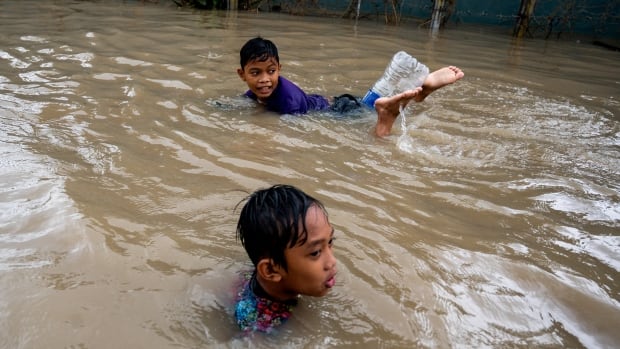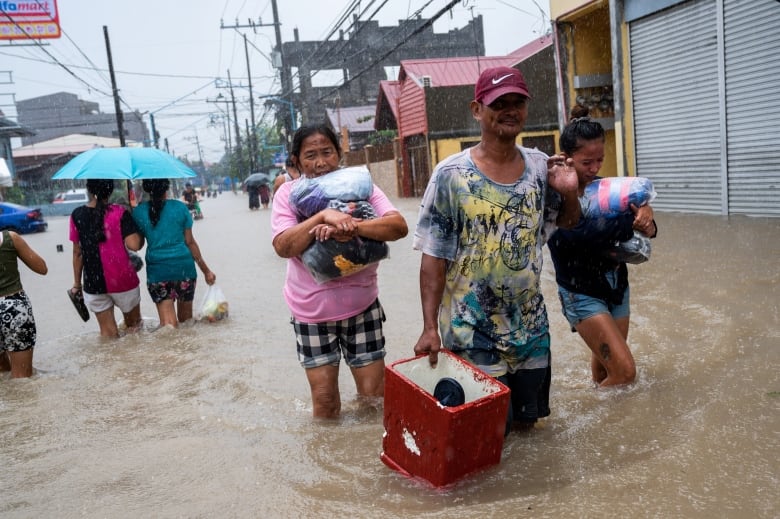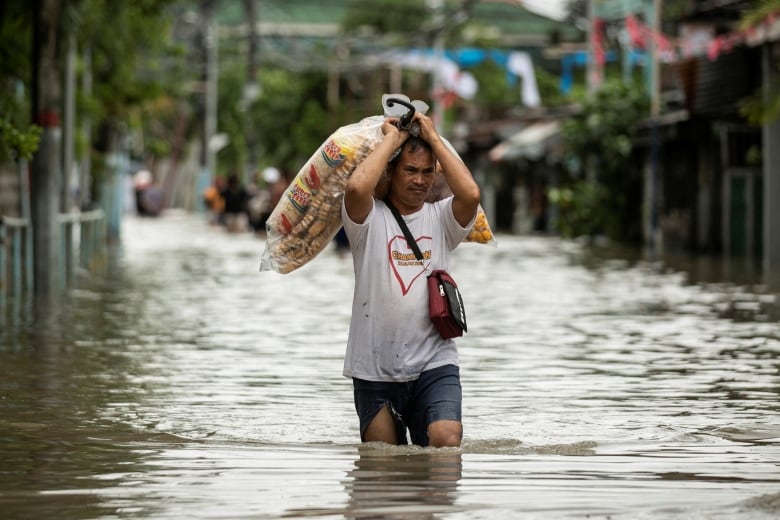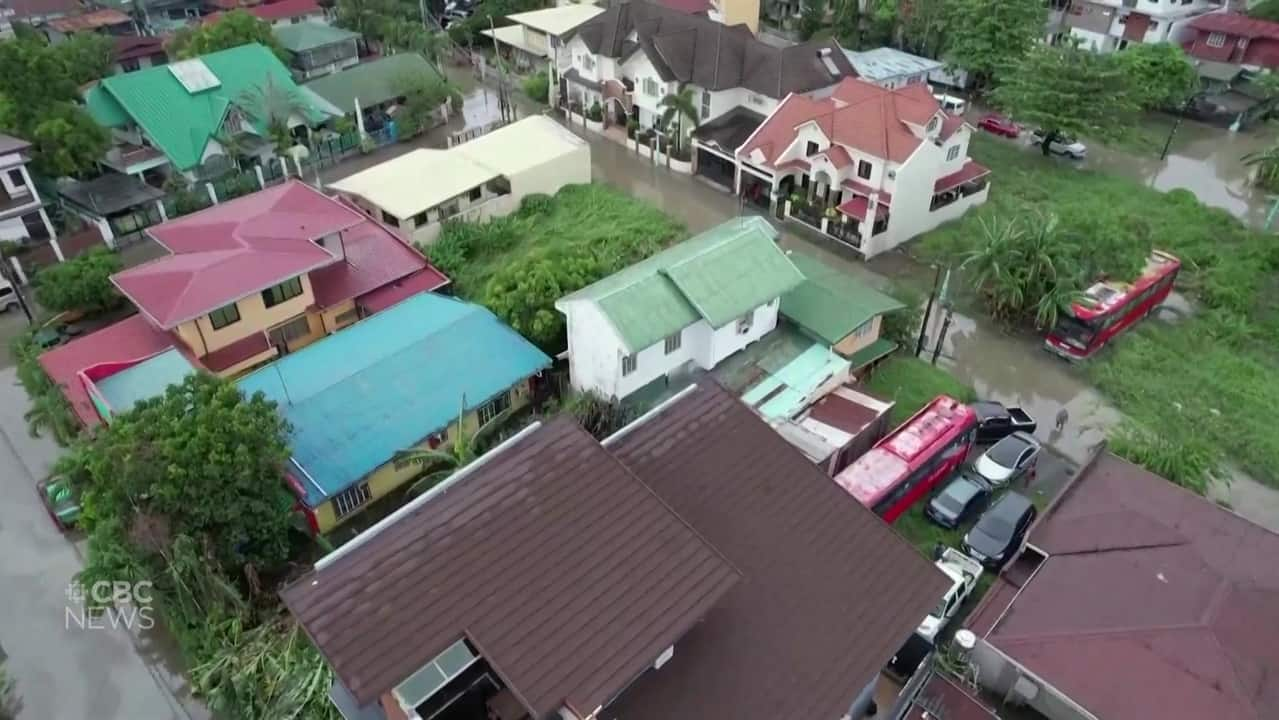
More than 100 people have died in one of the most destructive storms to lash the Philippines this year, with dozens more feared missing after villagers fled in the wrong direction and got buried in a mudslide. Almost two million others were swamped by floods in several provinces, officials said Monday.
At least 53 of 105 people who died — mostly in flash floods and landslides — were from Maguindanao province in a Muslim autonomous region, which was swamped by unusually heavy rains set off by Tropical Storm Nalgae.
The storm blew out into the South China Sea on Sunday, leaving a trail of destruction in a large swath of the archipelago.
A large contingent of rescuers with bulldozers, backhoes and sniffer dogs resumed retrieval work in southern Kusiong village in hard-hit Maguindanao. As many as 80 to 100 people, including entire families, are feared to have been buried there by a boulder-laden mudslide or swept away by flash floods that started overnight Thursday, said Naguib Sinarimbo, the interior minister for the Bangsamoro autonomous region run by former separatist guerrillas under a peace pact.
The government’s main disaster-response agency said there were at least 98 storm deaths, and seven other fatalities were later reported by three provincial governors. At least 69 people were injured and 63 others remain missing.
Destruction despite preparedness

About 1.9 million people were lashed by the storm, including more than 975,000 villagers who fled to evacuation centres or homes of relatives. At least 4,100 houses and 16,260 hectares of rice and other crops were damaged by floodwaters at a time when the country was bracing for a food crisis because of global supply disruptions, officials said.
Sinarimbo said the official tally of missing people did not include most of those feared missing in the huge mudslide that hit Kusiong, because entire families may have been buried and no member was left to provide names and details to authorities.
The catastrophe in Kusiong, populated mostly by the Teduray ethnic minority group, was particularly tragic because its more than 2,000 villagers have carried out disaster-preparedness drills every year for decades to brace for a tsunami because of a deadly history.
But they were not as prepared for the dangers that could come from Mount Minandar, where their village lies at the foothills, Sinarimbo said.
WATCH | Aftermath of tropical storm Nalgae in the Philippines
Rain from tropical storm Nalgae flooded parts of the Philippines, causing landslides and killing dozens of people.
“When the people heard the warning bells, they ran up and gathered in a church on a high ground,” Sinarimbo told The Associated Press on Saturday, citing accounts by Kusiong villagers.
“The problem was, it was not a tsunami that inundated them but a big volume of water and mud that came down from the mountain,” he said.
Deadly disasters
In August 1976, an 8.1-magnitude earthquake and a tsunami in the Moro Gulf that struck around midnight left thousands of people dead and devastated coastal provinces in one of the deadliest natural disasters in Philippine history.
Lying between the Moro Gulf and 446-metre Mount Minandar, Kusiong was among the hardest hit by the 1976 catastrophe. The village never forgot the tragedy. Elderly villagers who survived the tsunami and powerful earthquake passed on the nightmarish story to their children, warning them to be prepared.
“Every year, they hold drills to brace for a tsunami. Somebody was assigned to bang the alarm bells and they designated high grounds where people should run to,” Sinarimbo said. “Villagers were even taught the sound of an approaching big wave based on the recollection of the tsunami survivors.”
“But there wasn’t as much focus on the geo-hazards on the mountainside,” he said.

There were more than 100 rescuers from the army, police and volunteers from other provinces on Saturday in Kusiong, but they were unable to dig at a spot where survivors said the church lay underneath because the muddy mound was still dangerously soft, officials said.
A coast guard video provided to media on Monday showed some of its men helping search for buried bodies in Kusiong by poking long wooden sticks into the muddy, light-brown sludge.
Flight cancellations
The stormy weather in a large swath of the country hindered transportation as millions of Filipinos planned to travel over a long weekend for visits to relatives’ tombs and for family reunions on All Saints’ Day in the largely Roman Catholic nation.
Nearly 200 domestic and international flights were cancelled, Manila’s international airport was briefly closed amid stormy weather and voyages in storm-whipped seas were prohibited by the coast guard, stranding thousands of passengers.
Floodwaters swamped many provinces and cities, trapping some people on their roofs. President Ferdinand Marcos Jr. inspected the extent of damage aboard a helicopter over Cavite province Monday and later handed boxes of food and other supplies to storm victims in Noveleta town, where some residents were trapped on their roofs at the height of flooding over the weekend.
“The powerful surge of water destroyed the flood controls, so there was so much flooding,” he told a news conference.
About 20 typhoons and storms batter the Philippine archipelago each year. It is located on the Pacific “Ring of Fire,” a region along most of the Pacific Ocean rim where many volcanic eruptions and earthquakes occur, making the nation one of the world’s most disaster-prone.
